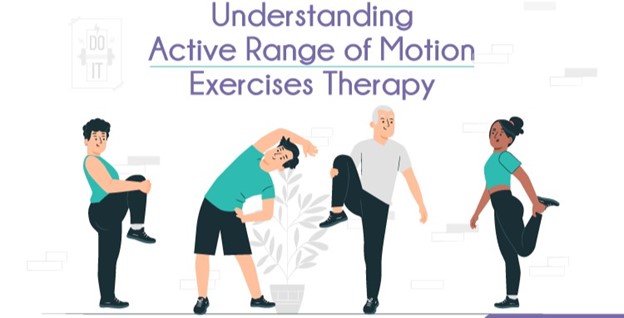A nurse is providing preoperative teaching to a client about promoting circulation during the postoperative period.
Which of the following instructions should the nurse include?
Participate in range-of-motion exercises
Use an incentive spirometer every 4 hours
Remain on bed rest for 24 hours following the procedure
Place a pillow under your knees while in bed
The Correct Answer is A

This instruction will help the client to prevent venous stasis and thrombosis, which are common postoperative complications. Range-of-motion exercises promote blood circulation and prevent muscle atrophy and contractures.
Choice B. “Use an incentive spirometer every 4 hours.” is wrong because it is not related to promoting circulation, but rather to improving lung expansion and preventing atelectasis and pneumonia. Using an incentive spirometer is also important for postoperative clients, but it does not address the question.
Choice C. “Remain on bed rest for 24 hours following the procedure.” is wrong because it is the opposite of promoting circulation.
Bed rest increases the risk of venous stasis, thrombosis, and pulmonary embolism. Postoperative clients should be encouraged to ambulate as soon as possible, unless contraindicated.
Choice D. “Place a pillow under your knees while in bed.” is wrong because it also impairs circulation and increases the risk of thrombosis.
Placing a pillow under the knees can cause pressure on the popliteal veins and reduce blood flow. Postoperative clients should avoid this position and keep their legs in a neutral or slightly elevated position.
Nursing Test Bank
Naxlex Comprehensive Predictor Exams
Related Questions
Correct Answer is A
Explanation
The correct answer is choice A. The nurse should compare new prescriptions with the list of medications the client reports. This is part of the medication reconciliation process, which is done to avoid medication errors such as omissions, duplications, dosing errors, or drug interactions. It should be done at every transition of care in which new medications are ordered or existing orders are rewritten.
Choice B is wrong because the nurse should not encourage the client to make his own list after he returns to his home. The nurse should provide the client with an updated and accurate list of medications before discharge and instruct the client to keep it with him at all times.
Choice C is wrong because the nurse should not include any adverse effects of the medications the client might develop. The nurse should include any known allergies or adverse reactions the client has experienced in the past, but not potential adverse effects that have not occurred.
Choice D is wrong because the nurse should not exclude nutritional supplements from the list of medications the client reports. The nurse should include all prescription medications, herbals, vitamins, nutritional supplements, over-the-counter drugs, vaccines, diagnostic and contrast agents, radioactive medications, parenteral nutrition, blood derivatives, and intravenous solutions in the medication reconciliation process.
Some of these products may interact with prescribed medications or affect laboratory results.
Correct Answer is C
Explanation
Having interdisciplinary team meetings for the client on a regular basis.
This action best promotes communication among staff caring for the client because it allows for consistent and coordinated care planning, information sharing, and goal setting for the client who has expressive aphasia and right hemiparesis following a stroke.
Choice A is wrong because posting swallowing precautions at the head of the client’s bed does not promote communication among staff, but rather informs them of the client’s risk of aspiration due to dysphagia, which is a common complication of stroke.
Choice B is wrong because noting changes in the treatment plan in the client’s medical record is a standard practice that does not necessarily enhance communication among staff, but rather documents the client’s progress and interventions.
Choice D is wrong because recording the client’s progress in the nurses’ notes is also a standard practice that does not necessarily enhance communication among staff but rather provides a summary of the client’s status and care.
Expressive aphasia is an acquired language disorder that affects the ability to produce spoken or written language, while right hemiparesis is a weakness or partial paralysis of the right side of the body.
Both of these conditions are caused by damage to the left hemisphere of the brain, which is responsible for language and motor control of the right side of the body. Stroke and traumatic brain injury are common causes of left hemisphere-damage
Whether you are a student looking to ace your exams or a practicing nurse seeking to enhance your expertise , our nursing education contents will empower you with the confidence and competence to make a difference in the lives of patients and become a respected leader in the healthcare field.
Visit Naxlex, invest in your future and unlock endless possibilities with our unparalleled nursing education contents today
Report Wrong Answer on the Current Question
Do you disagree with the answer? If yes, what is your expected answer? Explain.
Kindly be descriptive with the issue you are facing.
